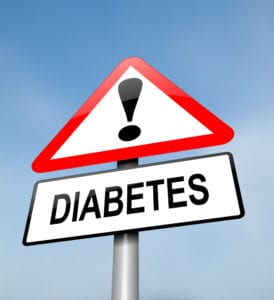 What To Do If Your Dog or Cat has Diabetes
What To Do If Your Dog or Cat has Diabetes
Diabetes is an endocrine disorder that affects the way the body produces or processes
the hormone insulin, which helps the body turn glucose (sugar) from food into energy.
Unfortunately, Diabetes is not curable in either dogs or cats. However, early diagnosis,
along with regular treatment and care, means your furry friend can still live a very long
and happy life.
Being aware and able to recognize the signs of Diabetes in your dog or cat is critical to
ensuring they get the help they need. Left unmanaged, Diabetes can have irreversible
effects. If you suspect your beloved dog or cat has Diabetes, be sure to consult your
veterinarian.
Symptoms of Diabetes in Dogs
If your dog is experiencing the following symptoms, make a veterinary appointment as
they could be indicators that your dog has Diabetes. Please note that these symptoms
overlap with many other health conditions, so blood work is necessary to make a proper diagnosis.
● Change in appetite
● Excessive thirst/increase in water consumption
● Weight loss
● Increased urination
● Unusually sweet-smelling or fruity breath
● Lethargy
● Dehydration
● Urinary tract infections
● Vomiting
● Cataract formation, blindness
● Chronic skin infections
While Diabetes is more common in middle-aged to older dogs, especially among
females, it’s not uncommon for younger dogs to develop Diabetes. Certain breeds are
more likely to develop Diabetes, including German Shepherds, Labrador Retrievers, and
Cocker Spaniels.
Symptoms of Diabetes in Cats
Diabetes is the second most common endocrine disease in cats. If your cat is
experiencing the following symptoms, make a veterinary appointment as they could be
indicators that your cat has Diabetes. Please note that these symptoms overlap with many other health conditions, so blood work is necessary to make a proper diagnosis.
● Increased thirst (polydipsia) and urination (polyuria)
● Inappropriate elimination (cats also experience increased urinary tract infections)
● Change in appetite (increased or decreased appetite is an indicator of a problem)
● Weight loss
● Change in gait (walking)
● Reduced activity, weakness, depression
● Vomiting
Diabetes tends to be more common among middle-aged to older cats, as well as among
felines that are overweight. However, unlike dogs, neutered male cats are more likely to
develop Diabetes. While any cat can develop Diabetes, breeds that are more prone to
this disease include Siamese, Maine Coon, and Burmese.
What To Do if Your Dog or Cat has Diabetes
If you find out your furry friend has Diabetes, it’s totally normal to feel worried and
anxious. First, take a deep breath. With the right kind of care and treatment, your beloved cat or dog can still live a happy and productive life. Your veterinarian can discuss various lifestyle changes
you will need to make in your pet’s life to ensure they remain healthy. These can include
more exercise, diet changes, oral medication, and insulin injections.
Still not sure if your furry friend has Diabetes? Take the quiz and see if your pet could be
at risk or schedule an appointment at one of our 21 locations.
With proper veterinary care, Diabetes can be manageable. Working together, we can help your pet live a long and healthy life.
[disclaimer]
Not intended to be a substitute for professional veterinarian advice, diagnosis, or
treatment. Always seek the advice of your veterinarian with any questions you may
have regarding the medical condition of your pet. If you think your pet has a medical
emergency, call or visit your veterinarian or your local veterinary emergency hospital
immediately.

